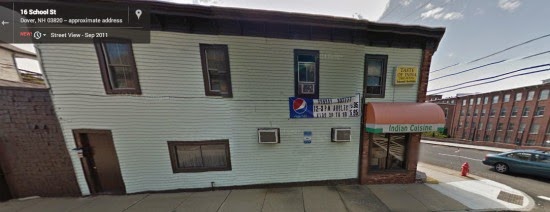There is nothing more horrifying than the violent death of child. On July 22, 1648, the bloody body of a four year old child was discovered in her Plymouth home...
Alice Martin was married to her second husband, Richard Bishop and had three small children in her home. Abigail & Martha Clark were daughters from her first marriage and she had a daughter, Damaris, with Richard.
A neighbor, Rachel (Eaton) Ramsden, came by the Bishop home on the morning and saw
Martha sleeping in the loft with no apparent injury. Alice Bishop sent Rachel to fetch some buttermilk from the Winslow home and when Rachel returned she noticed blood at the foot of the ladder and asked Alice about it. Alice pointed to the loft and "bid [Rachel to] look." Frightened that Martha was dead, Rachel ran to tell her parents. When the Plymouth Coroners entered the Bishop home, they saw the blood at the bottom of the ladder and found Martha dressed in her shift and lying on her left side. Her throat has been slashed multiple times, severing her windpipe. There was a knife lying beside the dead child. Alice confessed to the murder of her daughter. She would repeat her confession on August 1st.
 The trial was held in October 1648 and Alice was found guilty of willful murder and sentenced to be hanged. Unfortunately, the records leave many unanswered questions. The obvious question is what motive did Alice have to kill her daughter but I also wonder where the rest of the family was when the murder occurred. Check out this blog for a more thorough treatment of this case. The author has graciously allowed me to base this post off her extensive research.
The trial was held in October 1648 and Alice was found guilty of willful murder and sentenced to be hanged. Unfortunately, the records leave many unanswered questions. The obvious question is what motive did Alice have to kill her daughter but I also wonder where the rest of the family was when the murder occurred. Check out this blog for a more thorough treatment of this case. The author has graciously allowed me to base this post off her extensive research. Given the relatively small population of Plymouth at the time, estimated between 1500-2000, it is not surprising to find a number of connections between my family and this case. Both the Cotton and the Yates lines have multiple connections to the early Plymouth settlers.
Cotton:
Rachel Eaton Ramsden - the neighbor who reported the murder - 10th Great Grandaunt
Members of the Petit Jury
John Howland - 12th Great Grandfather
Giles Rickard - husband of 11th Great Grandaunt
Thomas Pope - husband of another 11th Great Grandaunt
Francis Billington - 2nd husband of 11th Great Grandmother & Rachel's step-father
Members of the Grand Jury
John Dunham - 10th Great Grandfather
Daniel Cole - 11th Great Grandfather
Yates:
Members of the Petit Jury
James Cole - 10th Great Grandfather
James Hurst - 10th Great Grandfather
John Shaw - 10th Great Grandfather
Members of the Grand Jury
Ephraim Hicks - 10th Great Granduncle
Love Brewster - husband of 10th Great Grandaunt
Sources:
http://alicemartinbishop.com/



















